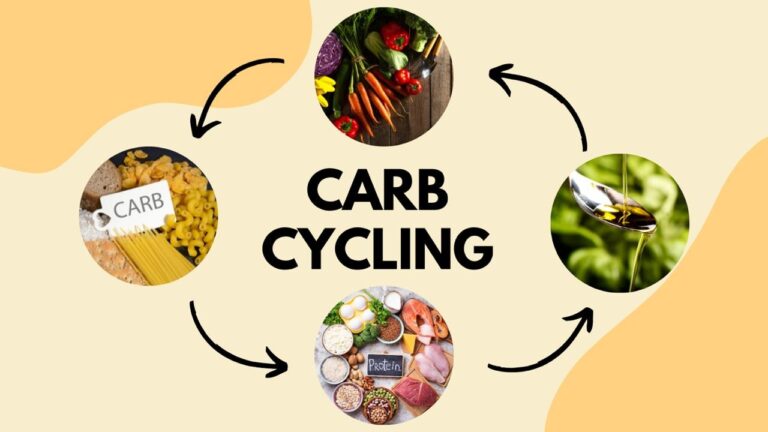For years, carbohydrates got a bad rap in the world of diet and fitness. But here’s the truth: carbs are not your enemy. They are your body’s primary fuel source for high-intensity workouts and cognitive function.
Now, what if you could strategically use the power of carbs to fuel your toughest workouts while simultaneously maximizing fat loss on your rest days?
This is the core idea behind one of the most popular nutritional strategies among athletes and fitness enthusiasts: Carb Cycling. This article is a simple, beginner-friendly guide to understanding how it works and how you can implement it to break through plateaus and achieve your goals.
What Is Carb Cycling and How Does It Work?
Carb cycling is a nutritional approach where you alternate your carbohydrate intake on a daily or weekly basis, rotating between high-carb, moderate-carb, and low-carb days.
The strategy is built on a simple principle: fuel for the work required.
- High-Carb Days: These are scheduled for your most intense, demanding training days (e.g., a heavy leg day or a HIIT session). The goal is to replenish muscle glycogen, boost performance, and spike anabolic (muscle-building) hormones.
- Low-Carb Days: These are reserved for rest days or very light activity days (e.g., walking or yoga). The goal is to increase insulin sensitivity and encourage your body to use stored fat as its primary fuel source.
The Golden Rule: On all days, protein intake should remain consistently high to prevent muscle loss and support recovery. Fat intake is typically lower on high-carb days and higher on low-carb days to balance your total calories.

 Also Read:
Ending the All-or-Nothing Cycle: How to Get Back on Track...
Also Read:
Ending the All-or-Nothing Cycle: How to Get Back on Track...
A Sample Weekly Schedule for Beginners
Let’s assume you have three intense training days per week. A simple plan could look like this:
- Monday (Heavy Leg Day): High-Carb Day
- Tuesday (Active Recovery/Light Cardio): Low-Carb Day
- Wednesday (Upper Body Workout): High-Carb Day
- Thursday (Rest): Low-Carb Day
- Friday (Full Body/HIIT): High-Carb Day
- Saturday & Sunday (Rest or Light Activity): Low-Carb Days
How to Manage This Complex Plan Without the Headache
The biggest challenge of carb cycling isn’t the theory; it’s the precise execution. Manually calculating different macro targets for each day is confusing, tedious, and easy to get wrong.
This is where Limotein transforms from a simple calorie counter into your performance management dashboard.
- Set Variable Daily Goals: Unlike many apps, Limotein allows you to set different macronutrient targets for each day of the week. You can program your high-carb goal for Monday and your low-carb goal for Tuesday, and the app will guide you accordingly.
- Get Real-Time, Accurate Feedback: As you log your meals with our easy voice or photo input, you can see exactly how close you are to hitting the specific carb, protein, and fat goals for that particular day.
- Plan Smarter: Use the “Recipe Suggestion” feature to find meal ideas that fit your day’s plan. Get high-carb meal ideas for your training days and low-carb, high-protein recipes for your rest days.
Conclusion: Go From Static to Dynamic Nutrition
Carb cycling is an advanced but highly effective strategy for optimizing your body composition and athletic performance. It gives your body the exact fuel it needs, on the day it needs it.
The complexity of executing this plan becomes simple and even enjoyable with the right tool.
Ready to take your fitness and fat loss to the next level? Stop eating the same way every day. Start fueling your body strategically. Use Limotein’s free trial to easily set up and manage your first carb cycling plan.




